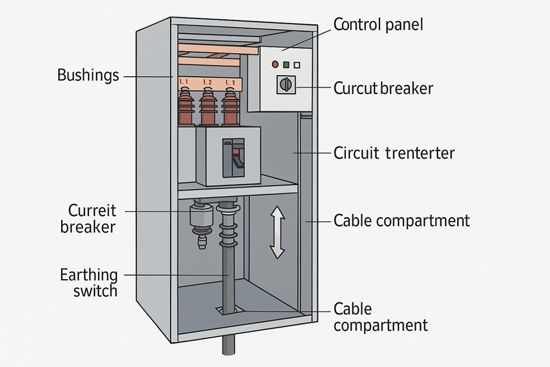Choosing the right switchgear depends on three key factors: your system’s voltage level, the installation environment, and the operational needs such as protection, monitoring, and maintenance. Rather than focusing on overly complex features or brand marketing, a practical selection should be based on functionality, compatibility, and safety.

For most industrial and utility applications:
·Use medium voltage switchgear (1kV to 36kV) for distribution networks and transformer substations.
·Use low voltage switchgear (below 1kV) for factory panels, building systems, and commercial loads.
·Use high voltage switchgear (above 36kV) for transmission or regional substations.
Confirm your incoming line voltage and rated current before narrowing down the options.
·Choose AIS switchgear if:
You have ample indoor/outdoor space, and want easy access for maintenance. It's cost-effective and easier to repair.
You need a compact solution in limited space (urban substations, buildings, wind farms). GIS also has better environmental sealing but requires careful gas handling.
Both types are technically sound—the right one depends on your available space and maintenance capacity.
Make sure the switchgear supports:
·Short-circuit withstand level appropriate for your grid
·Protection relays (overcurrent, earth fault, etc.)
·Reliable interlocks to avoid unsafe operations
·Arc-proof designs, especially in indoor installations
Don’t over-invest in complex smart systems unless remote operation or data feedback is essential for your setup.
Yes. Look for compliance with:
·IEC 62271 series for medium/high voltage switchgear
·GB standards (for China-based installations)
·ANSI/IEEE for North America
These ensure that the switchgear meets safety, durability, and performance expectations. Certified products also ease future maintenance and auditing.
Do I Need a Custom Solution?
Standard switchgear can meet most needs. However, custom designs may be required when:
·Your layout space is irregular or restricted
·You need non-standard cable entry or busbar configuration
·Special voltage transformation or integration with RMU or metering is needed
In such cases, providing technical drawings or site conditions to your supplier will help you get the right configuration quickly.
Rather than chasing high-end configurations, focus on getting a correctly rated, certified, maintainable switchgear set from a supplier that understands your regional requirements and can support you with installation or after-sales advice.
A practical, well-fitted switchgear solution will serve your project longer and more safely than an over-specified, complex one.